pictures on this page which may take some time to download.
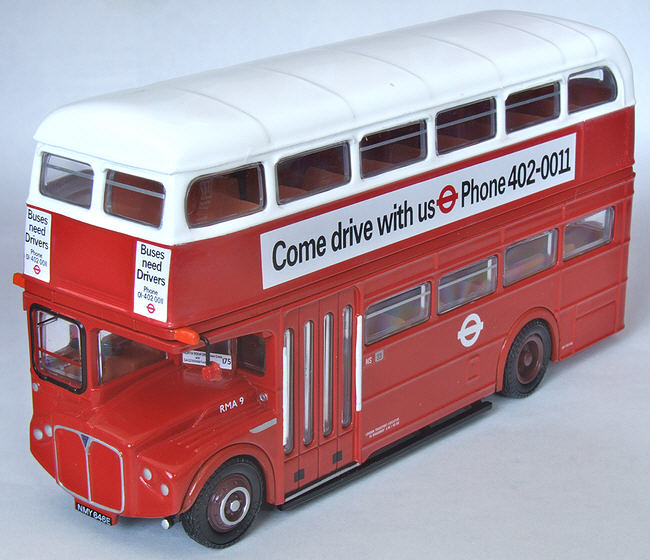
31801 The RMA Front Entrance Airport Routemaster
| A Brief History of the RMA
The first of the three new Routemaster castings has now been released, the RMA class was originally built to operate a service between London's Heathrow Airport and the West London Air terminal, although the buses were owned by B.E.A./British Airways they were operated under contract by London Transport staff from the former Chiswick Tram Depot which is today better known Stamford Brook Depot. In total just 65 buses of this type were built and these started to replaced the 74 special deck & a half AEC Regals IV's from October 1966. A fleet of eighty five Marshall drawbar luggage trailers were purchased at the same time and the buses were seldom seen without one these in tow. The airport services were gradually run down with the first batch of thirteen buses being withdrawn by BEA in September 1975. All the buses were purchased by London Transport and quickly pressed into service on route 175 the following month. The vehicles entered service initially still wearing their former BEA orange & white colour scheme but with the BEA insignia removed and white roundels added. Their use on this service was to be short lived as they proved unpopular with both staff and passengers due to the lack of internal grab rails and external destination displays. The majority of the buses were repainted in standard LT red livery during this period operation but all were deemed unsuitable and withdrawn from public service in September 1976. The final airport services were withdrawn in 1979 and eventually all 65 examples passed to London Transport where the majority were used as staff buses taking workers to & from Chiswick & Aldenham works. Ten examples were converted to driver trainers but this involved the removal of the staircase and the fitting of an extra offside window in place of the staircase panel. Some of the acquired RMA's were never used by London Transport and were broken up for spares or sold. The final staff bus examples were withdrawn in 1987 following the closer of both Aldenham and Chiswick Works. The trainers soldiered on but gradually fell by the wayside, two eventually passed to Stagecoach London where they had their staircases refitted before returning to passenger service on route 15 Beckton Express service where they stayed until the route was converted to one person operation in 1998. A number of RMA's passed to other operators, with some even being used on sightseeing tours in the capital, other examples passed to a varied collection of operators including Clydeside, London & Country, Green Rover, & Verwood Transport. A few examples still remain in service today while several others have been restored by preservationist's. |
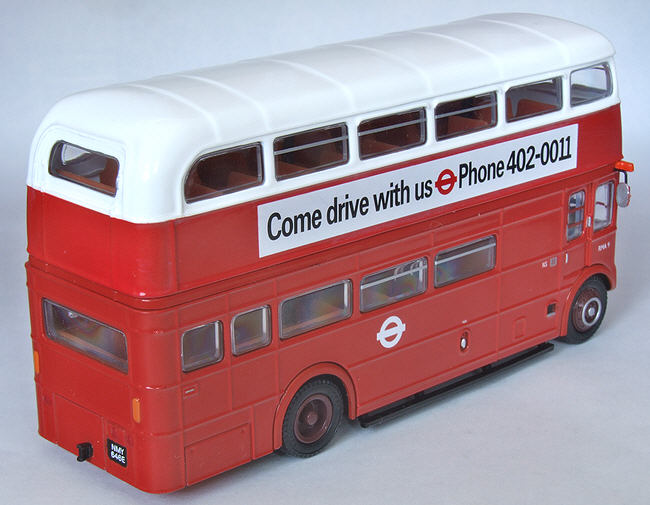
| The Model First impressions are good with the model proportions looking about right. The body detailing on the lower deck has been captured well and includes more panel beading below the lower deck side windows, the additional horizontal beading strip below the side windows certainly makes a big improvement to the appearance giving the model a more authentic feel, the large unbroken area on other versions has always looked slightly out of place in my opinion. |

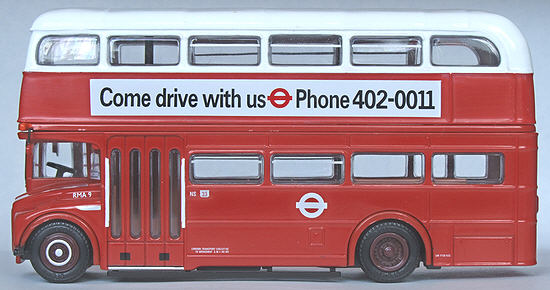
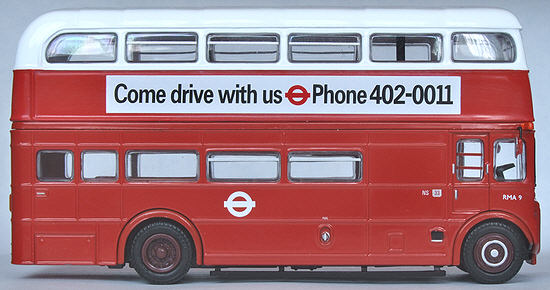

|
The correct four leaf platform doors have been reproduced and again look to be pretty accurate as do the handrails either side on which are picked out in white paint. |
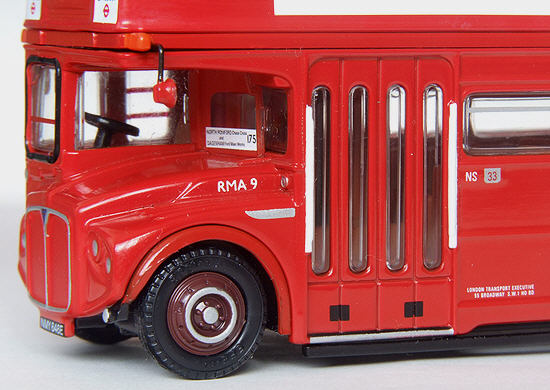
|
Moving to the all important front of the model the distinctive Routemaster snout is captured as are the twin head lamps fitted to these buses. The rather over protruding wing mirrors are once again fitted and like all the other releases so far in the Routemaster Series do tend spoil the models frontal appearance somewhat. |
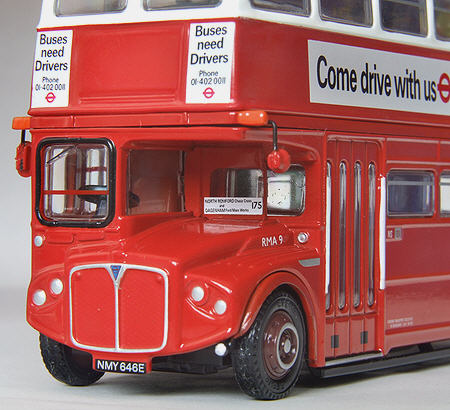
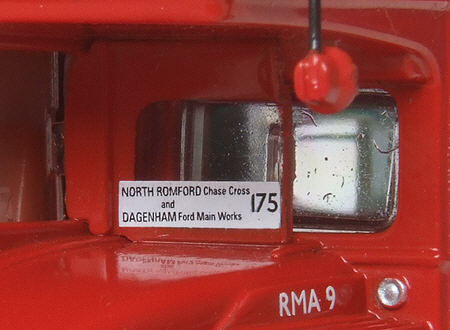
|
The rear of model includes the towing hook once used to attached the luggage trailers, this is a small plastic insert and it's design suggests a trailer could be clipped on to it if a model was produced in an appropriate livery. The stainless steel protective plate and various electrical connections that should surrounded the hook are not reproduced on this version sadly but the large rear lower deck window looks well proportioned while all the rear lights and various inspection panels are present. |
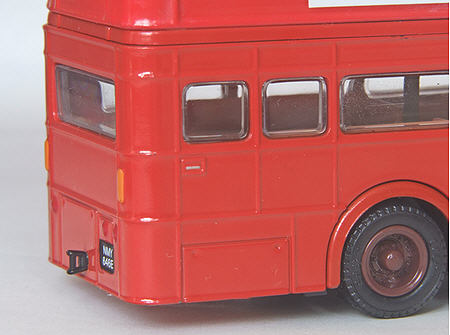
|
The base reveals a three quarter length plastic base plate with the rear most quarter cast in metal, this has A.E.C. Routemaster Bus RMA / RMC cast on it suggesting aspects of the same tooling have been used to produce both versions, this probably explains why the bonnet length, under canopy route box and plastic front window insert mentioned above all exist on this RMA version. |
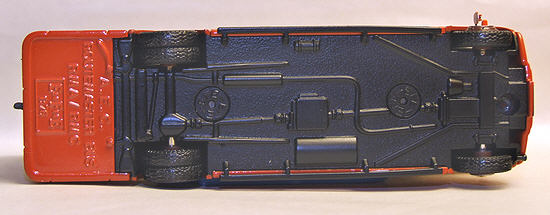
|
The tampo printing is crisp overall, the destination slip board includes some tiny text which is fully legible, the window vent bars are thinner than those found on the earlier RM versions and look far better as a result. Unless my memory's playing tricks I'd be inclined to say the orange colour chosen for the livery might be a little on the reddish side. |
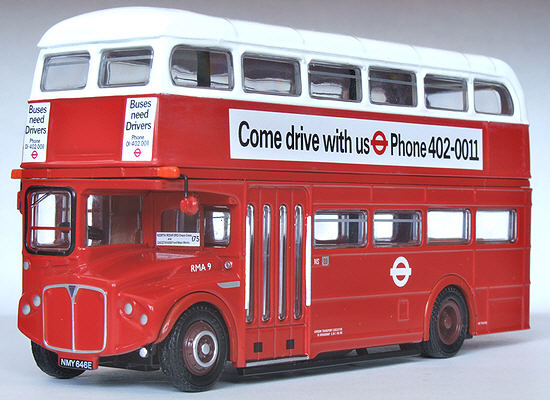
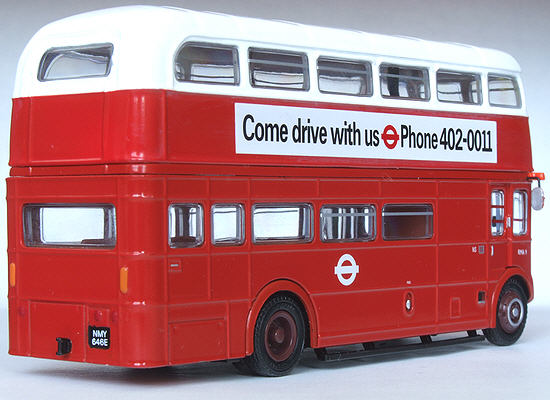
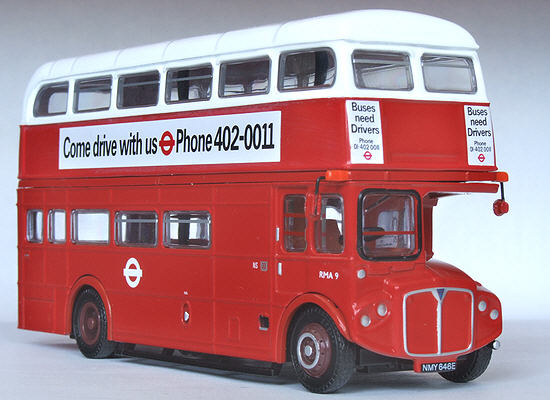
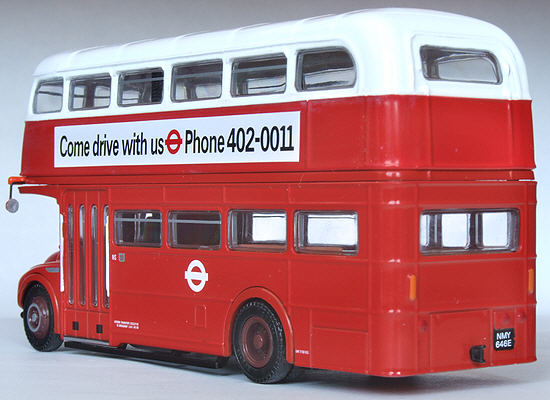
31801 London Transport RMA 9 on route 175
|
I've got to say I'm pretty happy with the final result, with a few tweaks to those over protruding mirrors (make the wire supports slightly shorter) you'd have a perfectly acceptable model. Combined with a suitable reproduction of the luggage trailer the BEA version of this model will make a particularly stunning and unusual piece for any Routemaster collector. | ||
 The RMA model consists of 37 individual parts | ||
| ||
| Model Review Index | ||